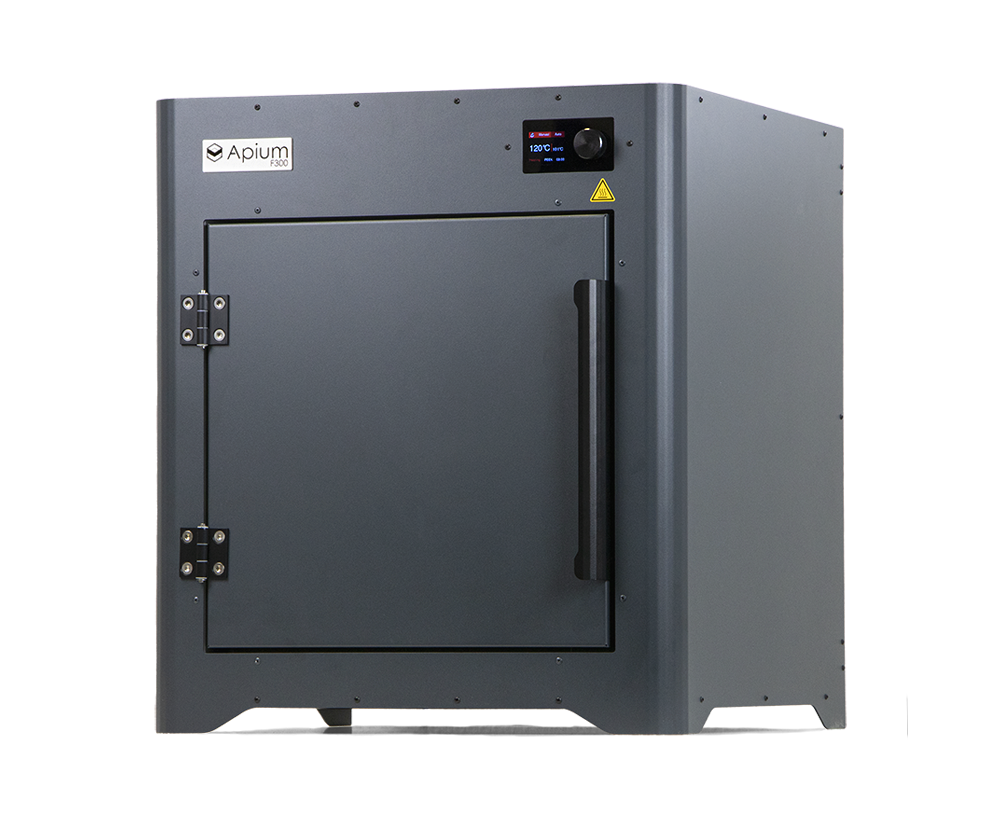
Apium F300
The filament dryer for open material 3D-printing systems
Reduces moisture related defects in 3D-printing of high performance materials and significantly increases the print success rate. Take advantage of our drying technology to increase the performance of your AM system.
Improve the print quality of high performance polymers with the Apium Filament Dryer F300.
Easy to Use
- Drying of standard to high-performance polymers
(e.g. PVA, PA, PP, ABS, PEI, PPSU, PEEK, …) - Direct temperature setting possible
- Selection of preset drying profiles
- Individual drying profiles
Easy to Integrate
- No compressed air required
- No cooling fluid required
- Low noise level: < 45 dB(A)
- Energy efficient
- Multiple filament outputs
Safety
- Built-in overheating protection
- Fully insulated
Filament Diameter
Up to 2.85 mm
Capacity
2x ∅300 × 102 mm spools or
4x ∅200 × 55 mm spools
Power Consumption
Max. 500 W
~ 59 W (at 60 °C)
~ 186 W (at 150 °C)
Temperature
Up to 150 °C
Drying settings
Pre-set profiles for common polymers
Custom profiles available
Supply voltage
100-240V~ 50/60Hz
Dimensions
530 × 600 × 570 mm
Influence of dried filament on the print quality
Extrusion Quality
Almost all technical high-performance materials are hygroscopic and interact with the water content in the ambient air. Therefore, they must be dried before use in the 3D-printer to remove moisture. Moisture-free filaments have no bubbles in molten form. This prevents poor optical properties and component defects.
Surface Finish
3D-printed parts made of dried materials are generally smoother and thus meet higher requirements for dimensional accuracy and surface quality.
Oozing and Stringing
With pre-dried filaments, the oozing out of the nozzle is reduced during the printing process and the stringing is significantly reduced.
Mechanical Properties
3D-printed parts from dried filaments exhibit stronger mechanical properties and less structural failures.
Interlayer Adhesion
Dry filament usage will avoid hydrolysis, which deteriorates mechanical properties of polymers and can lead to delamination during printing.
Cosmetic Defects
Dry filament usage eliminates a number of moisture-related 3D-printing defects.
Discover the possibilities with additive manufacturing of high performance polymers to gather momentum for your business.
